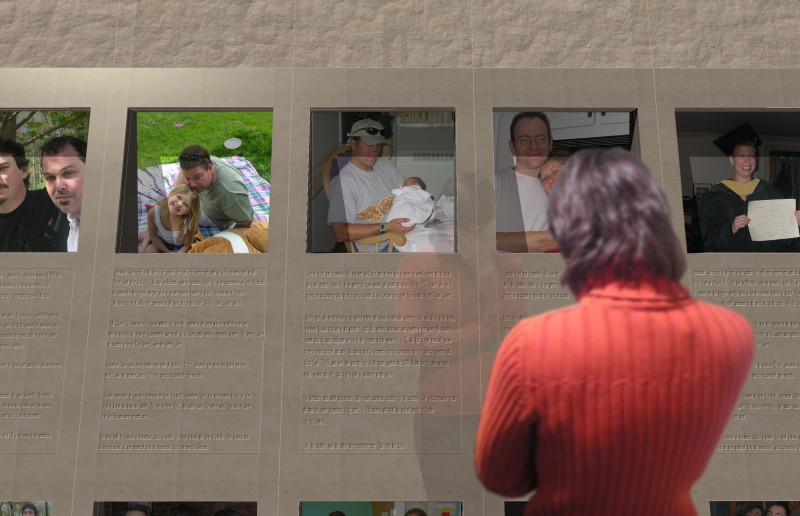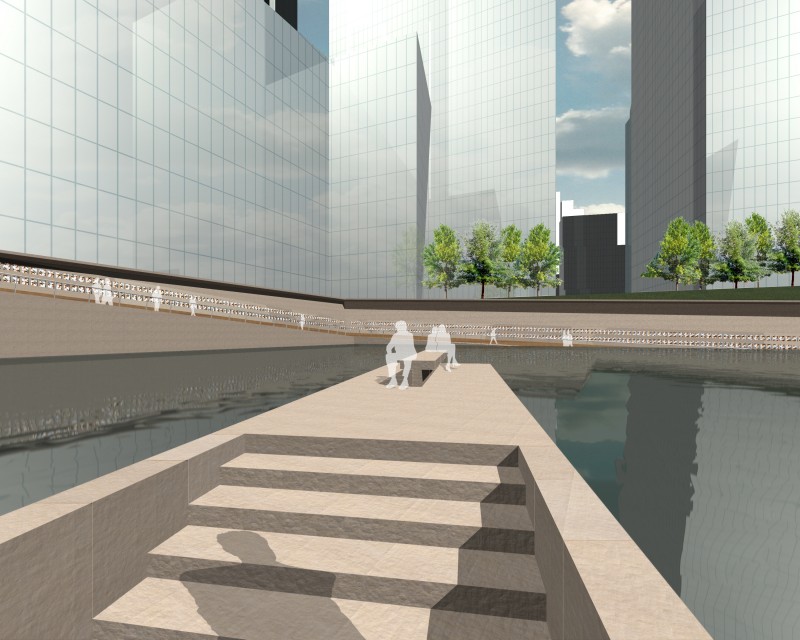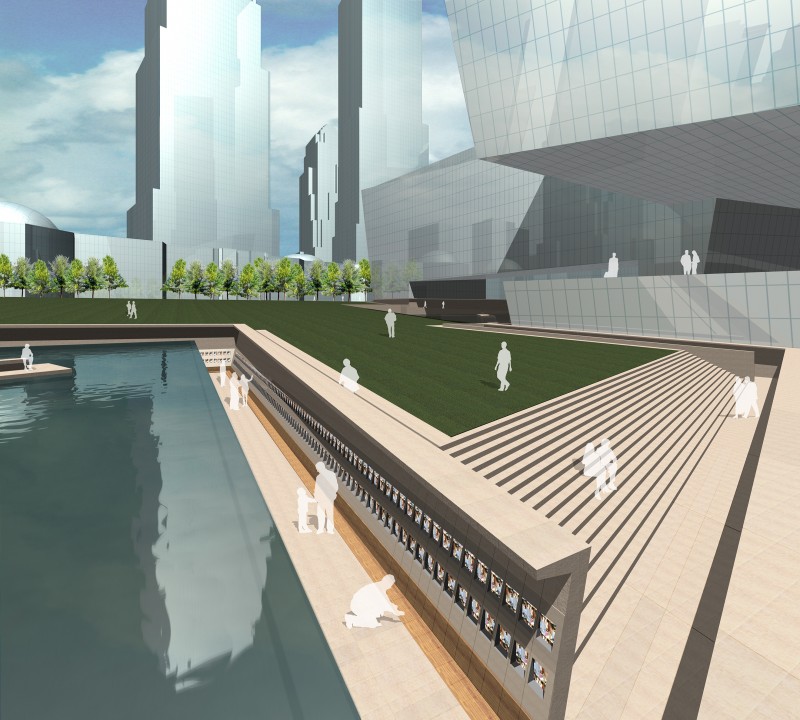World Trade Center Memorial Competition
- City: New York, New York
- Notes:
Living in downtown Manhattan at the time of the attacks, I felt compelled to draw on my personal experiences for the memorial competition.
The makeshift memorials that appeared, almost instantaneously, throughout the city in the days immediately following 9/11 are the inspiration for our proposal. Initially, fliers for the missing, with a photograph and a personal description, the simple postings were quickly transformed into participatory memorials by the addition of flowers, candles and written messages. Being close in age to so many of the victims was devastating – an awful reminder of our own mortality. But the slow realization of the memorials inevitable dismantling was equally sad. The tangible memories of the victim’s deaths, like their lives, were fleeting.
Memorial Wall
The wall contains an engraved name and monitor for each victim. The monitor is capable of displaying a wide range of personal artifacts from the victims. We imagine like a father playing with his children, travel photographs or a letter to a loved one. The goal of the monitors is to acknowledge each victim as an individual. As the author Paul Auster commented on the New York Times Portraits of Grief, “we weren’t mourning an anonymous mass of people, we were mourning thousands of individuals. And the more we knew about them the more we could wrestle with our own grief”. The large number of monitors will convey the massive scope of the tragedy while each monitor will recognize the live of a single victim.
The stone clad wall follows a path that wraps the perimeter of each tower footprint. The wall descends from street level at the southeast and northwest corners of the site to an open area along the eastern edge of the site below September 11th Place. As you descend the path, opposite the memorial wall, water from the reflecting pools that mark the tower footprints laps over the edges. At the base of the memorial wall, a band of plywood panels runs continuously. The plywood panels will allow for visitors to pin up letters or photographs, write messages and place memorial candles. At the open plaza below September 11th Place, the memorial contains the monitors for the fireman, police officers and first responders.
Footprints
Narrow peninsulas projecting into reflecting pools at each tower footprint provide spaces for quiet contemplation and visitation. Walking from the open plaza, the peninsulas are reached by ascending a stair cut into the base of each footprint. At virtually the same level as the water, the path leads to single monumental stone bench. Sitting on the bench, visitors can understand the extent of the memorial. Several thousand monitors will be visible beyond the reflecting pools. The pools create a buffer that separates the visitors from the memorial wall and enables an opportunity for reflection.
Park
A park along the western edge of the site allows access to the memorial and integrates the site into the city. It ensures the use of the site by members of the community, the downtown workforce and visitors. The gently sloping terrain allows visitors to look up into the city and watch as it is rebuilt. The slope leads to a monumental stair facing the area of the memorial wall dedicated the emergency service victims.
- Architect: Jonathan Chace, Joshua Frankel










